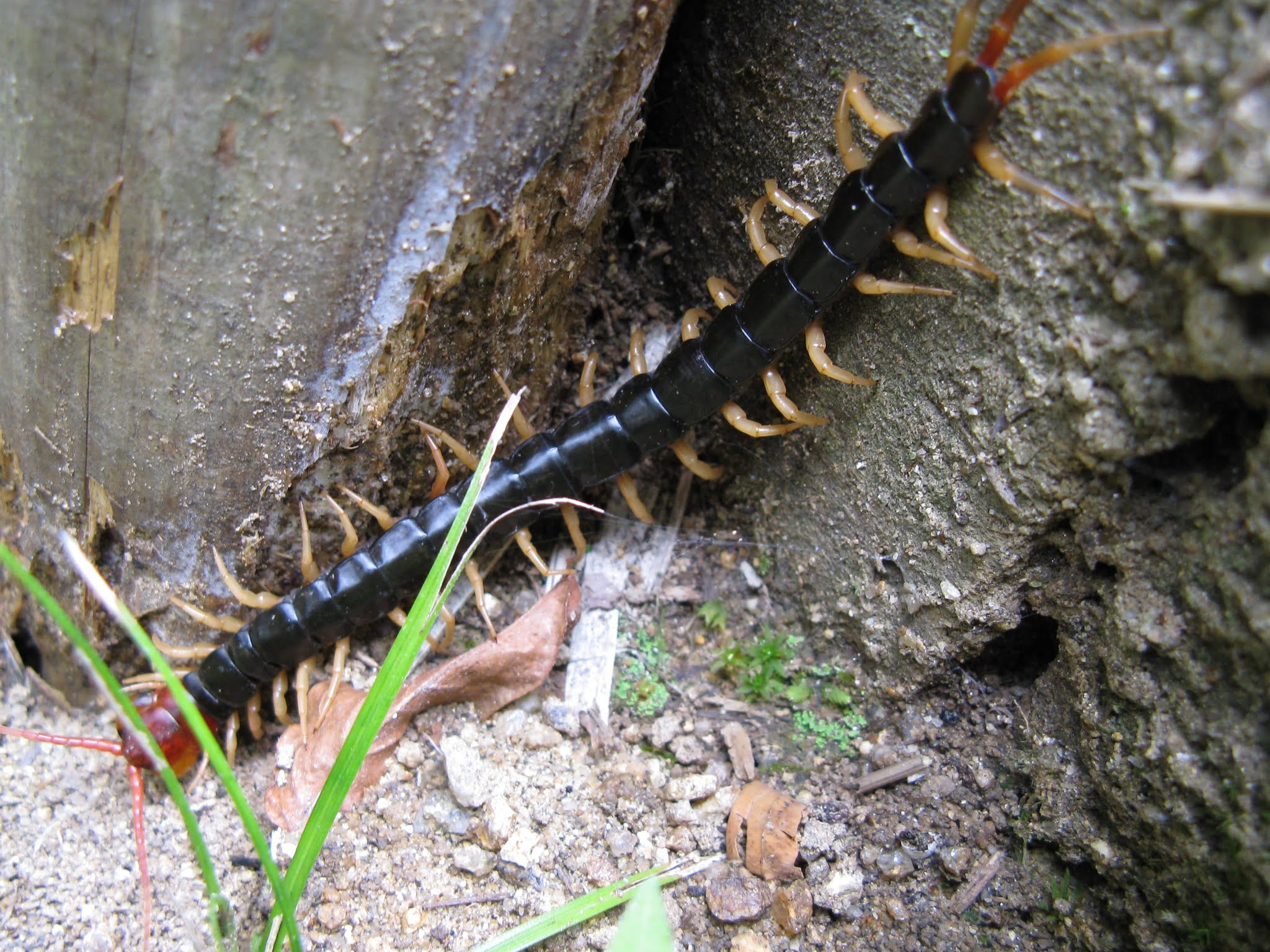 |
| Jungle Centipedes (source) |
Jungle Centipedes, Feared Jungle Animals. Jungle Centipede or in scientific language Scolopendra subspinipes is the name of a type of centipede with a very wide habitat distribution.
They can be found in Southeast Asia, East Asia, Australia, West Africa, South America, to the Hawaiian Islands. They can be found in basically any habitat as long as it is not too hot, not too cold, and has plenty of shade to hide the centipedes from.
Jungle Centipedes, Feared Jungle Animals
Due to the wide spread of their habitat, Jungle Centipedes are also known by many names. Ranging from Vietnamese centipedes, Chinese red-headed centipedes, Asian giant centipedes, Malaysian cherry-headed centipedes, Japanese centipedes, to orange-legged centipedes.
Jungle Centipedes are classified as a large species of centipedes because they can reach more than 20 centimeters in length. Jungle Centipedes have quite diverse appearances because everything has been found, everything has been found.
Despite their diversity, all Jungle Centipedes have a physical similarity in the form of orange legs. The antenna on the head always consists of 18 to 19 segments, while the body consists of 21 segments.
 |
| Jungle Centipedes, Feared Jungle Animals |
Jungle Centipedes breathe using tiny holes called spiracles that run along their sides. When inhaled, Jungle Centipedes easily lose moisture via their spiracles.
In order not to become dehydrated, these centipedes have a habit of hiding under rocks or wood when the weather is hot. Only when it is dark or cloudy will the centipede come out of hiding for activities.
About Feeding and reproductive behavior
Like other species of centipedes, Jungle Centipedes are carnivores, aka meat eaters. Jungle Centipedes are basically willing to eat any animal as long as the animal is not much different in size.
Whether it's insects, earthworms, lizards, frogs and even mice. To paralyze its prey, this centipede will inject poison from the fangs on its head.
So that the prey does not wriggle when bitten, the Jungle Centipede will catch the prey using a lot of its legs.
Jungle Centipedes are solitary animals, aka loners. When it is time to mate, the male will release a spermatophore or sac containing sperm. The female will then load the spermatophore in her organ called the spermatheca. When she wants to lay eggs, the female will use her sperm deposit to fertilize the eggs in her body.
Female Jungle Centipedes lay fertilized eggs in a dark, sheltered place. In contrast to their fierce and frightening appearance, female Jungle Centipedes are mothers who are very concerned about the safety of their eggs.
 |
| Jungle Centipedes, Feared Jungle Animals |
Eggs that have not hatched will protect the eggs by wrapping their bodies around the eggs. After the eggs hatch, the baby centipedes stay with their mother for a while before departing to continue their life independently.
During growth, baby Jungle Centipedes will experience repeated skin changes. Mature Jungle Centipedes also molt, but only once a year. Jungle Centipedes experience sexual maturity at the age of three and can live up to ten years.
Feared animals and animals that are much sought after by humans
Jungle Centipedes are animals that should not be disturbed because these animals have an important role in controlling the population of nuisance animals in their habitat.
Another reason why humans shouldn't disturb these centipedes is that Jungle Centipedes can give very painful and poisonous bites. The Jungle Centipede itself will only bite if it is really cornered. When encountering humans, these centipedes prefer to flee to safety.
If a Jungle Centipede bites a human, it will leave a bite mark that looks like a needle mark. Humans who are bitten by this centipede will feel sore and swollen on the part of the body that is bitten.
If a child is bitten, the repercussions can be much more severe. In real story, there is a seven year old child who died after being bitten by a Jungle Centipede. Despite the terrifying reputation it carries, in fact, Jungle Centipedes are still in great demand by humans.
In Asian countries such as China and Vietnam, many Jungle Centipedes are caught because they can be processed into satay and traditional medicine. Due to the high interest of people in local countries to eat centipedes, in other countries many centipedes are caught in oil palm plantations for export to Vietnam.
Besides being eaten by humans, centipedes can also be used as Arowana fish feed. For lovers of exotic animals, Jungle Centipedes are highly sought after by pets thanks to their striking and beautiful colors.
How to maintain Jungle Centipedes itself is relatively simple because these animals do not require a lot of special care. Jungle Centipedes can be kept in transparent walled cages (such as an aquarium) with soil and wood piles in them.
The inside of the cage should be kept moist with an average temperature of 26 degrees Celsius. For food, these centipedes can be fed crickets or cockroaches once a week.
Feeding it more frequently than that, as centipedes that eat too much are more likely to die. To prevent the centipede from climbing out of the cage, the top of the cage must be equipped with a cover that has a small opening for air entry and exit. By: Ochie











2 comments
So how many centipedes do you have as pets?
ReplyI used to have a pet with 4 centipedes, now I am released into the wild, because I am getting busier, so I let go of many of the pets I have.
ReplyHow about you?